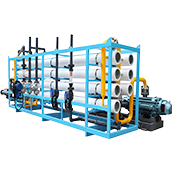The shallow sand filter stands out in the water treatment sector as an effective solution for removing contaminants from various water sources. In an industry evolving rapidly due to rising demands for cleaner water and stricter environmental standards, the Shallow Sand Filter and related sand water filter systems are witnessing advancements in both material technology and operational intelligence. This article explores the current trends influencing the development of the Shallow Sand Filter and evaluates the role of new technologies such as smart monitoring and data analytics in optimizing filtration efficiency and operational lifespan.
Trends in Water Treatment and the Shallow Sand Filter’s Role
As governments, industries, and communities worldwide prioritize sustainable water resources, the need for advanced filtration methods is increasing. Shallow sand water filters are gaining attention for their adaptability, which allows them to operate effectively across various water quality scenarios. Current development trends suggest a shift towards more efficient and durable filter media materials, offering longer service life and improved pollutant removal efficiency. Materials that withstand high chemical and biological loading are particularly valuable, helping the filters to perform more reliably in high-demand settings such as municipal water systems and industrial facilities.

One key focus in the development of shallow sand filters is on new materials that enhance the filter’s capacity to trap diverse particles. Advanced composites, such as high-density, multi-layered filter media, improve filtration without requiring frequent maintenance. The trend toward utilizing sustainable materials that reduce the environmental impact of the filter’s lifecycle is also evident, aligning well with global sustainability goals.
Emerging Technology Integration: Enhancing Efficiency with Smart Systems
One of the most promising advancements in shallow sand filter technology is the integration of smart systems, such as automatic backwash mechanisms that allow for on-demand cleaning cycles without disrupting filtration. By automating the backwash process, systems can maintain optimal filter performance and extend the unit's lifespan, reducing the need for labor-intensive manual cleaning. Additionally, automatic backwash enables the filter to respond to fluctuations in water quality, enhancing its reliability across various settings.
Further, the integration of smart monitoring tools and data analytics enhances the shallow sand filter’s adaptability by allowing for real-time tracking of filter performance metrics. Using sensors that monitor turbidity, flow rates, and pressure drops, these systems provide invaluable data that can be used to optimize operations and predict maintenance needs. Data analytics play a crucial role in pinpointing operational issues before they impact filter efficiency, saving time and reducing costs in the long term.

For instance, data-driven insights might indicate that specific seasonal conditions or unusual pollutant levels are causing filter clogging. The system can then automatically trigger an automatic backwash or adjust filtration parameters to manage these changes. Such features align the shallow sand filter with the broader trend of predictive maintenance, which allows operators to anticipate and address issues before they escalate.
Future Innovations: What Lies Ahead for Shallow Sand Filters
Looking forward, innovations in shallow sand filter technology are expected to continue along two primary lines: the development of hybrid filtration methods and increased use of artificial intelligence (AI). By combining the sand filter with other filtration technologies, such as membrane or activated carbon filters, a multi-stage filtration process can be achieved, allowing for higher contaminant removal efficiency across a wider range of pollutants. This hybrid approach is particularly useful in industrial applications where pollutants vary widely in type and concentration.
Meanwhile, AI-powered systems that analyze historical data and environmental factors can refine the filter’s operations, determining the most efficient filtration cycles and automatic backwash intervals. These intelligent systems could eventually adjust filtration parameters autonomously based on predicted water quality changes, maximizing efficiency with minimal human intervention.

Socio-Environmental Impact and Long-Term Benefits
Beyond efficiency and functionality, the advancements in shallow sand filter technology also bring important socio-environmental benefits. By improving the longevity and efficiency of these filters, water treatment facilities can operate more sustainably, using fewer resources and reducing waste. This aligns with global environmental goals, particularly as industries work to reduce their water and energy footprints. In regions where water scarcity is a pressing concern, the role of efficient, adaptable filters is increasingly critical for sustainable water management.
Moreover, as smart technology becomes more affordable, sand water filters that integrate monitoring and data analytics will become accessible to smaller municipalities and communities in developing regions, supporting broader access to safe water resources. With more sustainable designs and automated functions, shallow sand filters provide a responsible choice for eco-conscious organizations and play a role in fostering resilient water infrastructure.

Conclusion
The shallow sand filter is poised for significant advancements driven by material innovations and digital integration, creating a more adaptable, efficient, and environmentally friendly filtration option. As both government and industry standards evolve, the integration of automatic features and smart technologies promises to elevate the filter’s role in addressing global water challenges. With innovations that enhance the effectiveness of sand water filters, the shallow sand filter remains a valuable component in the pursuit of sustainable water treatment solutions.









